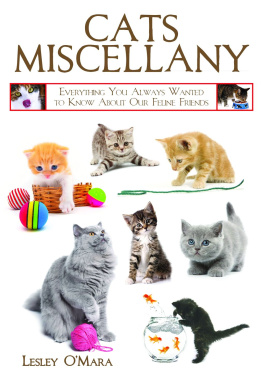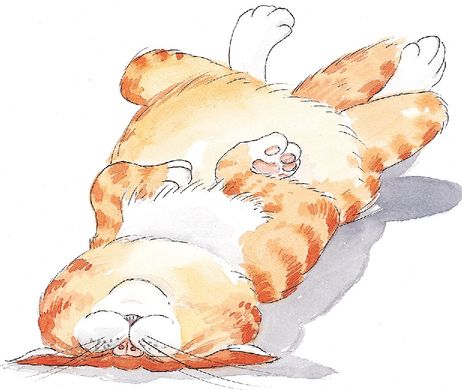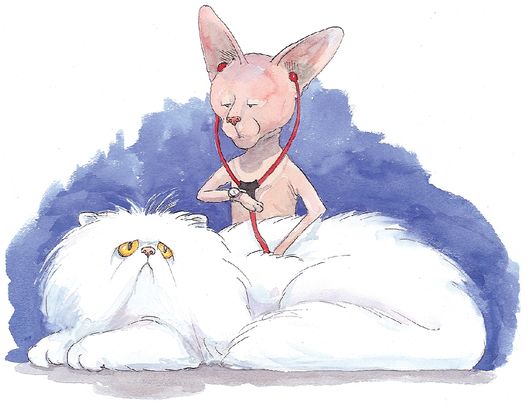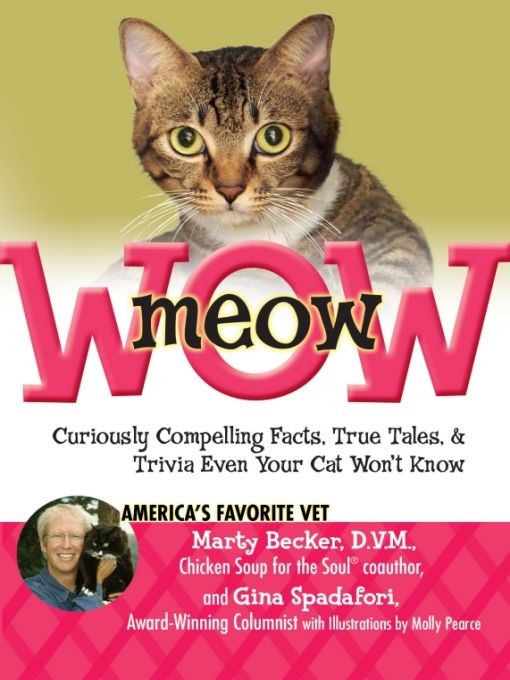
Table of Contents
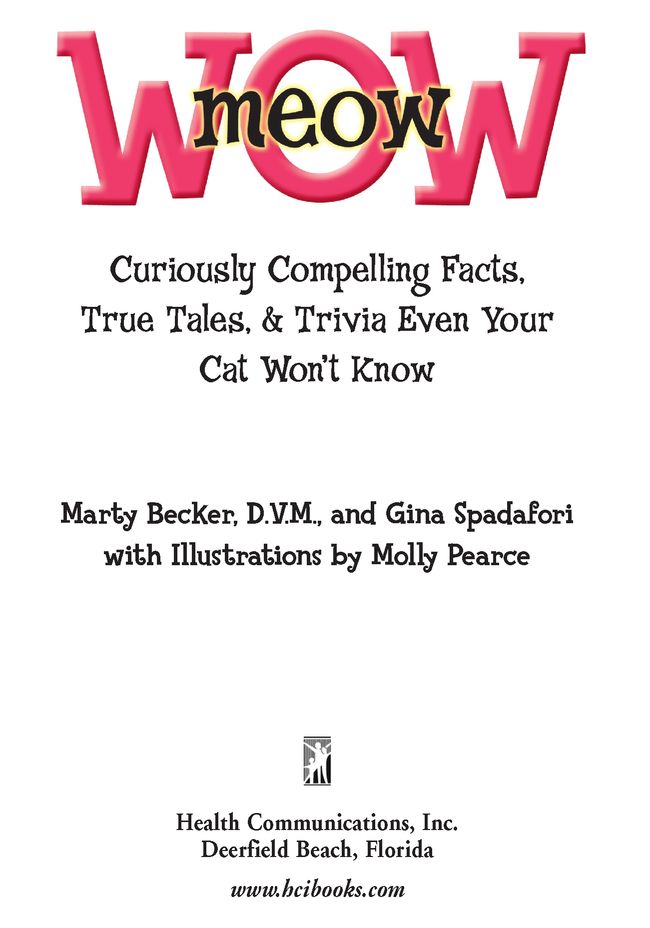
Introduction
CATS ARE A MYSTERY. Thats true even after thousands of years shared with our kind and theirs. Thats true even though we keep more cats as pets than dogs. And thats true even though we try our very best to understand what makes our cats tick.
Chances are, cats will always remain a mystery. And maybe thats the way we really like it. Its surely the way our cats prefer it.
And yet... knowing more about our cats helps us to bond with them better, care for them more appropriately, and love them even more.
Solving a few of those mysteries is what we set out to do in this book. We love catsour own and all catsand we want to help others to appreciate them more.
So enjoy finding out more about cats. We promise youll be fascinated by the discoveries within these pages, and we promise something even more: no matter how much you learn about your cat, some things will always be a mystery.
And that, says the cat, is the way it should always be.
Dr. Marty Becker
Gina Spadafori
Theres nothing like a catnap
DOMESTIC CATS SPEND about 70 percent of their lives asleep. As youve probably guessed, most of those hours are spent in short snatches of sleepcatnaps, of course. That works out to be about sixteen to eighteen hours a day, or about the same as a newborn human baby.
Feline vitals
A CATS HEART NORMALLY beats between 140 and 220 times per minute, with a relaxed cat on the lower end of the scale. Its not unusual for the cats heart rate to be high at the veterinarians, because cats dont like being away from home, and they certainly dont like being poked and prodded by strangers.
You can take your cats pulse at home, by the way. You need a watch that clicks the seconds off and... your cat! Put your hand over your cats left side, behind the front leg. Youll feel the heart pulsing beneath your fingers. (If you cant, you might want to talk to your veterinarian about getting some of the fat off your cat!) Count the beats while fifteen seconds click off your watch; multiply by four to get the BPM, or beats per minute.
While youre at it, you might as well check out your cats respiration rate. Step back and watch your cat when hes relaxed and standing. Count the number of times the abdomen and chest wall move in sixty seconds. A normal cat takes fifteen to twenty-five breaths per minute.
Normal feline body temperature is between 100 and 102.5 degrees, read from a thermometer inserted where the sun doesnt shine.
The mystery of the purr
ITS NOT A MYSTERY that caressing a purring cat is a pleasurable experienceitll even lower your blood pressure. But what is a mystery, strangely enough, are the mechanics of purring itself.
In short, no one really, truly knows exactly how a cat purrs.
The most common explanation is that a purr originates in the voice box, with what are called the vestibular folds, or false vocal cords. The passing of air across these structures is thought to get the engine running.
More interesting purr facts:
Purring is more than a sound of contentment. Cats also purr if theyre injured, while giving birtheven when dying. British zoologist Desmond Morris has observed in his masterwork Catworld: A Feline Encyclopedia (Penguin USA) that purring is a sign of friendshipeither when [the cat] is contented with a friend or when it is in need of friendshipas with a cat in trouble.
Purring starts early. Kittens start purring even before they open their eyes, rumbling while nursing in what must be a reassuring sound to their motherwhos likely purring herself.
Little cats purr, but big cats cant. Your cat has one up on the lion: cats purr, but lions cant. (On the flip side, lions roar, but cats cant.) No big cat can get his motor running the way our household kitties can, purring constantly as effortlessly as breathing, both in and out. Tigers can rumble a tiger-sized purr-like sound, but on the exhale only.
Cats cant taste the sweet stuff
PEOPLE CRAVE SWEETS: cakes, candies, cookies, and sodas galore. But cats couldnt care less because the taste buds of a cat are incapable of detecting, appreciating, or triggering a craving for the foods we recognize as sweet.
As obligate carnivoresmeaning they need meat protein to survivecats dont need to have much to do with sweets. Its unclear whether the ancestors of cats had the ability to detect sweetness and lost it, or whether cats never developed a sweet tooth because they didnt need it.
People eat a much more varied diet, and our taste buds reflect thatwe have nearly ten thousand taste buds on our tongues. No such variety for cats, whod be happy to stick with small prey animals and need fewer than five hundred taste buds to figure whats good on the menu.
No doubt their limited abilities in this regard contribute to the well-known finicky nature of some cats.
Cats eat grass because... they like to
MOST PEOPLE BELIEVE THAT when a cat chews on grass its because of an upset tummy. While that may factor into the urge to graze on some occasions, its more likely cats eat grass simply because they like to. And the fiber probably helps with digestion.
Its not just grass, though. Plenty of other plants bring delight to cats. Many cats also appreciate alfalfa, rye, and wheat grass seedlings. You can keep your stem-chewing kitty happy by sowing seeds in a low, wide container and always having tender, young plants for nibbling on. Many cats also like parsley.
And dont forget catnip! Most people know about the amazing effect of catnip on many cats, but not many people know that valerian (Valeriana officinalis) also tickles a cats fancy. Plant both of these in cat-proof areas or your pet may pull the seedlings out by the root! After the plant is large enough to withstand it, trim some of it and offer it to your pet.
Catnip makes some cats go crazy and mellows others out. But many cats arent at all capable of enjoying the buzzabout half of all cats are genetically incapable of tapping into the joyful experience of meowie-wowie. And all kittens are immune to the nip, with the ability to experience the catnip high showing up in susceptible cats around the age of four months.
Next page







